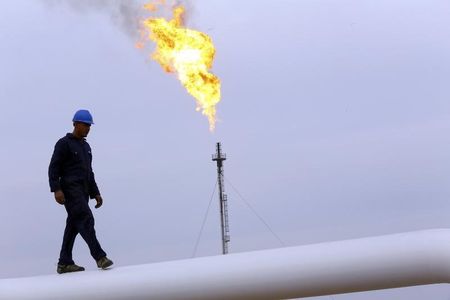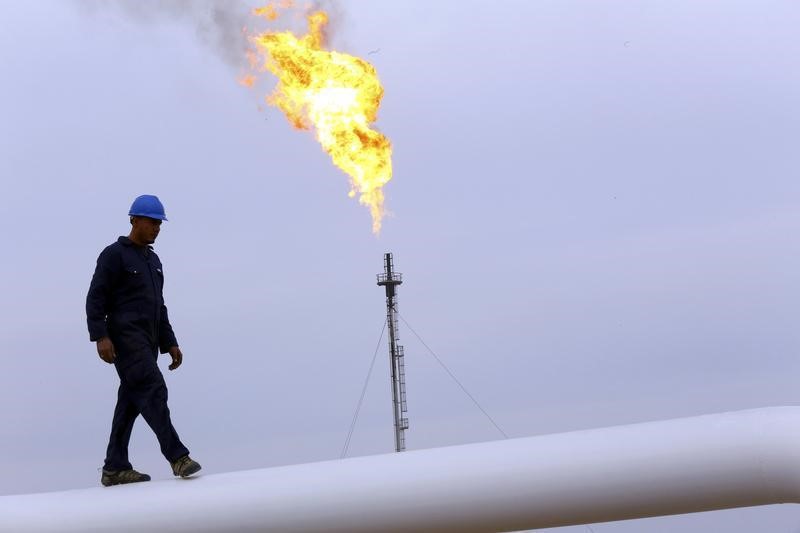Commodities
Oil books 3rd weekly gain; market awaits Fed verdict on inflation


© Reuters.
Investing.com — Oil booked a third weekly gain, with U.S. crude trading above $90 per barrel the first time in 10 months on better-than-expected data from top importer China, as markets awaited the Federal Reserve’s verdict on inflation in the United States.
The Fed’s policy-makers aren’t expected to raise when they meet on Sept. 20, after 11 hikes that added 5.25 percentage points to a base rate of just 0.25% in March 2020. But what Chairman Jerome Powell says at his news conference on Wednesday will be closely watched for clues on Fed think for the rest of the year, especially with two more policy meetings on the schedule for November and December.
For context, the headline reading for the U.S. rose a second month in a row in August, reaching a year-on-year growth of 3.7% from 3.2% in July. High pump prices of gasoline accounted for more than half of the increase — a phenomenon that could put renewed pressure on inflation fighters at the Fed. The central bank’s desired inflation remains at a max 2% per year and it has vowed to get there with more rate hikes if necessary.
“The Fed are highly unlikely to hike next week but are also unlikely to take the last hike out of their dot plot for later in the year,” economist Adam Button said in a post on the ForexLive forum.
New York-traded West Texas Intermediate, or , crude settled at $90.77, up 61 cents, or 0.7%, on the day. The U.S. crude benchmark rose to $91.15 earlier in the session, its highest since November. For the week, WTI finished up 3.7%, adding to prior back-to-back weekly gains of 2.3% and 7.2%.
London-traded settled at $93.93, up 23 cents, or 0.3%. The global crude benchmark hit a 10-month high of $94.62 earlier. For the week, Brent was up 3.6%, adding to prior back-to-back weekly gains of 2.4% and 4.8%.
Crude prices have been on a tear since early June, with the rally accelerating in the past three weeks after major oil exporters Saudi Arabia and Russia colluded to remove a combined 1.3 million barrels from the market each day until the end of the year.
U.S. fuel demand/inflation picture murkier than thought
Notwithstanding the July-August rise in inflation, the surge in crude prices haven’t made their commensurate impact on U.S. fuel prices. Gasoline at pumps across America averaged at $3.866 per gallon this week, up just 5.8 cents from a week ago. Lower demand for fuel was the reason, especially after the Sept. 4 Labor Day holiday that marked the close of the peak summer driving period and the approach of the fall season, which begins Sept. 23.
“The slide in people fueling up is typical, with schools back in session, the days getting shorter, and the weather less pleasant,” said Andrew Gross spokesperson at the American Automobile Association, which publishes weekly fuel price data. ““Oil costs are putting upward pressure on pump prices, but the rise is tempered by much lower demand.”
The Fed, of course, is watching all these closely, including the global supply-demand picture for energy and how they could hit home.
China has two stories as well to oil demand, economic recovery
In China’s case as well, its oil demand and economic data tell different stories.
China’s industrial output grew 4.5% in August from a year earlier, versus a forecast 3.9%, and retail sales expanded by 4.6%, beating an expected 3% increase. Also, Chinese crude imports rose nearly 31% last month while refinery throughput hit a record 64.69 million metric tons as a function of summer travels.
But these short-term upswings only mask China’s structural challenges, from worsening demographics to slowing productivity growth and an economy overly saturated on its property market. If lucky, China’s Gross Domestic Product, or GDP, growth will exceed 5% this year versus the record expansion of 11.8% in 2020, say economists.
Essentially, what happens with the Chinese economy down the road is far more important than any energy, metals or grains rally of today. That’s simply because continuously underperforming Chinese GDP will come back to rear-end any commodities rally.
(Peter Nurse and Ambar Warrick contributed to this item)
Commodities
Oil prices rise; U.S. crude inventories plunge, Russia-Ukraine truce eyed
Commodities
India’s Reliance to stop buying Venezuelan oil over US tariffs, sources say
Commodities
Oil prices climb on Venezuela supply worries

 Forex3 years ago
Forex3 years agoForex Today: the dollar is gaining strength amid gloomy sentiment at the start of the Fed’s week

 Forex3 years ago
Forex3 years agoUnbiased review of Pocket Option broker

 Forex3 years ago
Forex3 years agoDollar to pound sterling exchange rate today: Pound plummeted to its lowest since 1985

 Forex3 years ago
Forex3 years agoHow is the Australian dollar doing today?

 Cryptocurrency3 years ago
Cryptocurrency3 years agoWhat happened in the crypto market – current events today

 World3 years ago
World3 years agoWhy are modern video games an art form?

 Commodities3 years ago
Commodities3 years agoCopper continues to fall in price on expectations of lower demand in China

 Economy3 years ago
Economy3 years agoCrude oil tankers double in price due to EU anti-Russian sanctions





























